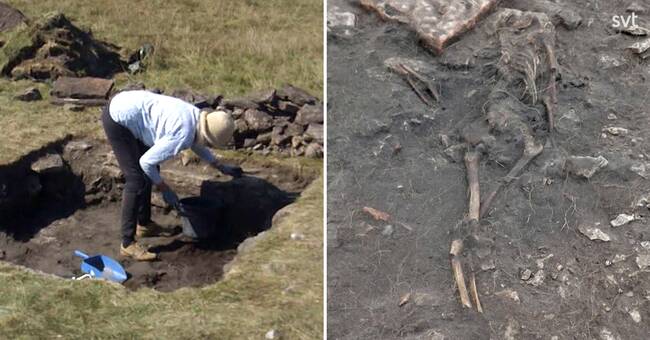One summer night in the late 400s, the castle by Sandby was attacked by attackers.
It does not seem that the people in the castle had time to defend themselves, and the attackers left the dead where they fell, inside the houses or out on the street.
This meant that the remains decayed in a different way than if they were buried in, for example, a coffin, the archaeologist Clara Alfsdotter at Bohuslän's museum.
- The bodies became skeletons before the house walls collapsed over them, and that means that there are very dry fractures in the legs.
And so animals were on the bodies first.
Can solve today's murder case
Clara Alfsdotter is also a bone researcher, osteologist, and is working on a doctoral dissertation where she compares how human bodies are broken down after death under different conditions.
In a coffin, the body retains moisture longer.
A body on the ground dries faster.
And that kind of knowledge can be used by forensic scientists to investigate a death, perhaps a murder, today.
- We look a lot at the forensic scientists' jobs and what we can learn from them, and what they can learn from archeology.
We have had police officers out at Sandby castle who checked how we work.
What methods we use to document.
What kind of tracking dog we had, and so on.
So there is an exchange of information, says Clara.
So far, archaeologists have found about 30 dead at Sandby castle, of all ages.
It is unclear why they were allowed to remain, along with a lot of at that time quite valuable items.
Archaeologist and project manager Helena Victor at Kalmar County Museum believes that this indicates that they fell victim to a power struggle between islanders, not a looting train.
Insulted the dead
- There are ritual expressions here that did not exist if there was looting.
And what has been left behind are, among other things, animals, precious metals and equipment, she states.
A ritual expression is that someone put goat or sheep teeth in the jaw of a man who was chopped down over the hearth in a house.
A kind of ritual insult, perhaps because the dead man was the chief of the castle.
One tenth of the area inside the collapsed dikes has been excavated.
Archaeologists are fairly certain that they will find significantly more dead when they dig more.
200-250 people may have lived there, Helena Victor thinks.
- Wherever we dig, human bodies appear.
They remain where they died, in the middle of their everyday lives.
Everything is left as a frozen moment.

